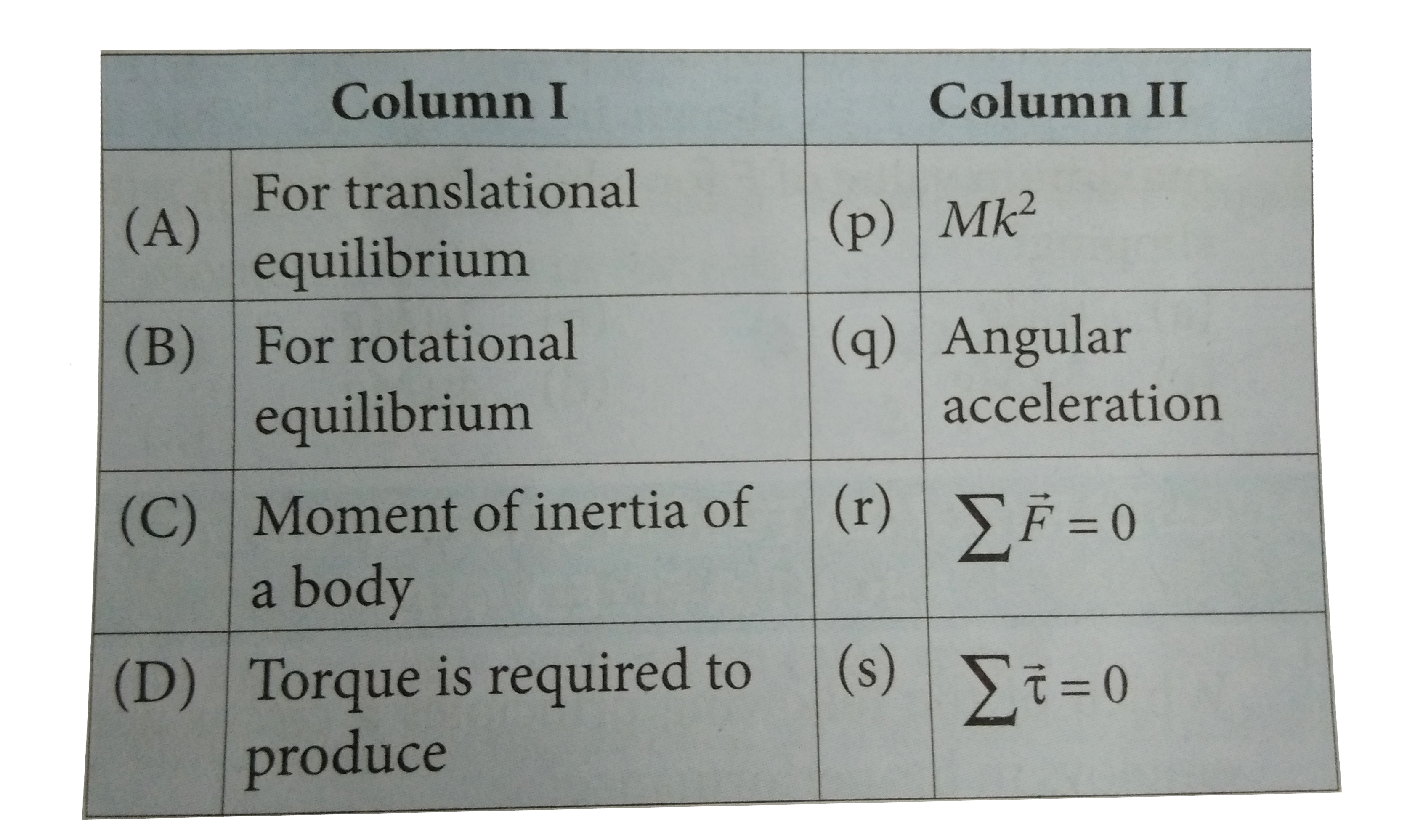Select the correct match :
Column AColumn BI. Tap roots1. MaizeII. Fibrous roots2. Mustard3. Wheat4.Sugarcane
I - 2 , II - 1,3
I - 2 , II - 1, 3 ,4
I - 4, II - 1, 2 ,3
I - 1,3, II - 2, 4
The correct Answer is:B
To solve the question, we need to match the types of root systems in Column A with their corresponding examples in Column B.
1. Identify the Root Types in Column A:
- I. Tap roots
- II. Fibrous roots
2. Understand the Characteristics of Each Root Type:
- Tap Roots:
- Found primarily in dicotyledonous plants.
- Characterized by a single main root (primary root) that grows deeper into the soil with lateral roots branching off.
- Common examples include mustard.
- Fibrous Roots:
- Found primarily in monocotyledonous plants.
- Characterized by a network of roots that are similar in size, originating from the base of the stem.
- Common examples include maize, wheat, and sugarcane.
3. Match Tap Roots with Examples:
- From the examples given in Column B:
- 2. Mustard is a dicot plant and has a tap root system.
- Therefore, I. Tap roots match with 2. Mustard.
4. Match Fibrous Roots with Examples:
- From the examples given in Column B:
- 1. Maize, 3. Wheat, and 4. Sugarcane are all monocots and have a fibrous root system.
- Therefore, II. Fibrous roots match with 1. Maize, 3. Wheat, and 4. Sugarcane.
5. Final Matching:
- I. Tap roots → 2. Mustard
- II. Fibrous roots → 1. Maize, 3. Wheat, 4. Sugarcane
Conclusion:
The correct matches are:
- I. Tap roots → 2. Mustard
- II. Fibrous roots → 1. Maize, 3. Wheat, 4. Sugarcane
Answer:
The correct match is:
- I. Tap roots → 2. Mustard
- II. Fibrous roots → 1. Maize, 3. Wheat, 4. Sugarcane
---
- I. Tap roots
- II. Fibrous roots
- Tap Roots:
- Found primarily in dicotyledonous plants.
- Characterized by a single main root (primary root) that grows deeper into the soil with lateral roots branching off.
- Common examples include mustard.
- Fibrous Roots:
- Found primarily in monocotyledonous plants.
- Characterized by a network of roots that are similar in size, originating from the base of the stem.
- Common examples include maize, wheat, and sugarcane.
- From the examples given in Column B:
- 2. Mustard is a dicot plant and has a tap root system.
- Therefore, I. Tap roots match with 2. Mustard.
- From the examples given in Column B:
- 1. Maize, 3. Wheat, and 4. Sugarcane are all monocots and have a fibrous root system.
- Therefore, II. Fibrous roots match with 1. Maize, 3. Wheat, and 4. Sugarcane.
- I. Tap roots → 2. Mustard
- II. Fibrous roots → 1. Maize, 3. Wheat, 4. Sugarcane
The correct matches are:
- I. Tap roots → 2. Mustard
- II. Fibrous roots → 1. Maize, 3. Wheat, 4. Sugarcane
The correct match is:
- I. Tap roots → 2. Mustard
- II. Fibrous roots → 1. Maize, 3. Wheat, 4. Sugarcane
Similar Questions
Knowledge Check
Match the Column I and Column II.,B
 AA-p, B-q, C-r, D-sBA-q, B-r, C-s. D-pCA-r, B-q, C-p, D-pDA-r, B-s, C-p, D-q
AA-p, B-q, C-r, D-sBA-q, B-r, C-s. D-pCA-r, B-q, C-p, D-pDA-r, B-s, C-p, D-qMathc column I with column II and selct the correct option from the given codes.
Column IColumn IIC3Plants(i)Kalanchoe,OpuntiaC4plants(ii)Maize,sugarcaneC4plants(iii)Maize,sugarcaneAii,iii,iBi,ii,iiiCiii,ii,iDi,iii,ii
Select the correct matching :
Column IColumn II(A)Alternate1.China rosa , mustard,(B)Whorled2.Alstonia(C)Opposite3.Calotropis and guava
View SolutionFind the correct match :
Column - IColumn - IIA. Rauwolfia(i) RhizomeB. Quinine(ii) RootC. Curcuma longa(iii) Bark
View SolutionMatch column with column II and select the correct option from
codes given below.
Column IColumn IIA. Brassica(i) HmigiriB. Okra(ii) Pusa KomalC. Wheat(iii) Pusa GauravD. Cowpea(iv) Pusa Sawani
View SolutionIdentify and select the correct match of columns I , II and III
View SolutionMatch column I with column II and select the correct option from given codes.
Column IColumn IIA. Marginal(i) Sunflower, marigoldB. parietal(ii) PeaC Axile(iii) Mustard,ArgemoneD. Free central(iv) Hibiscus,ArgemoneE. Basal(v) Dianthus, Primorse
View SolutionMatch column I with column II and select the correct option from the given codes.
ColumnIColumnIIA.Ovary(i)Groundnut,mustardB.Ovule(ii)Guava,organe,mangoC.Wall of ovary(iii)PericarpD.Fleshy furits(iv)SeedE.Dry fruits(v)Fruit
View Solution



